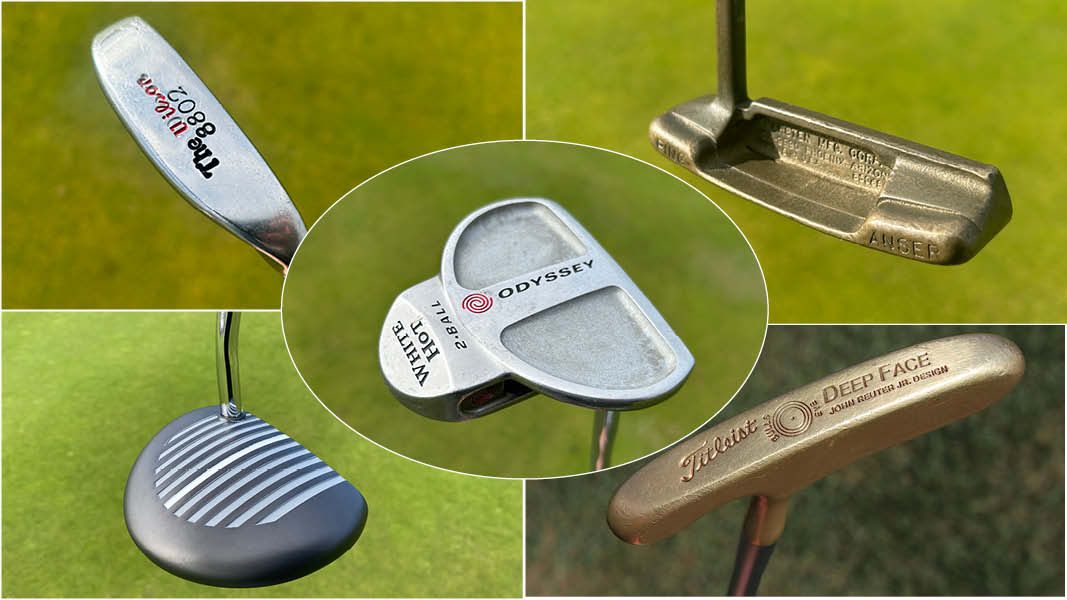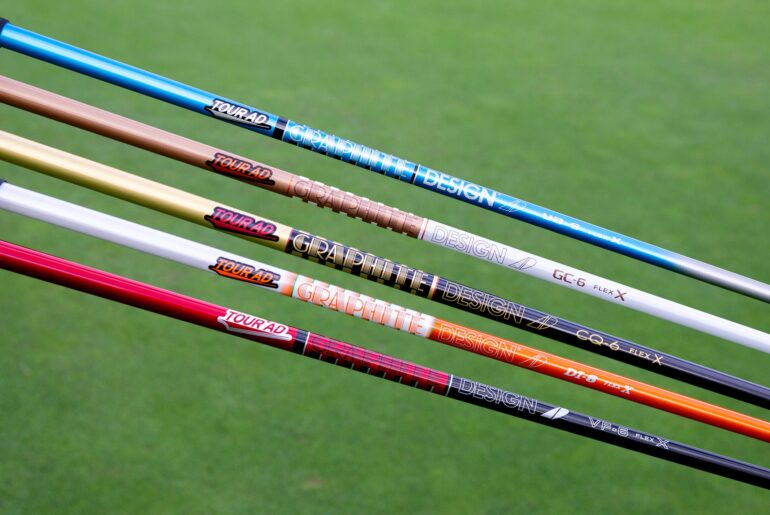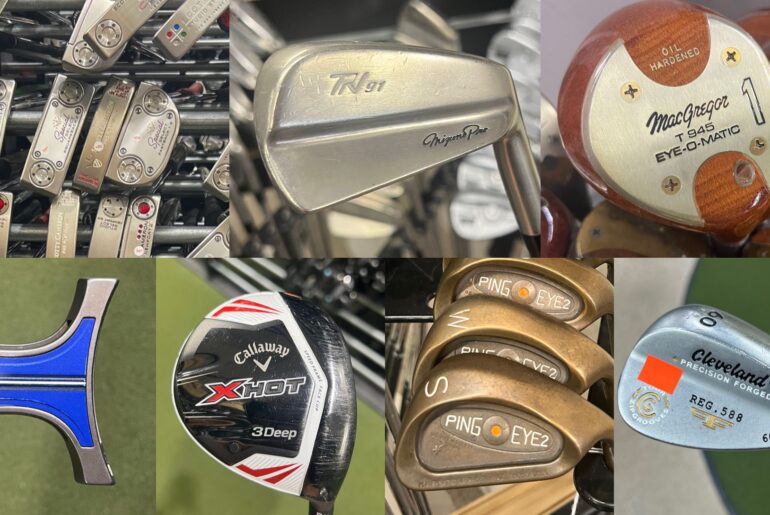Just to be clear from the outset: this mini list of the best putters of all time – which resident gear fanatics Dan Parker and Joe Ferguson discuss in the Kick Point video below – is subjective.
So, please do not send us any angry emails (comments are more than welcome, we’d love to hear from you – see below).
Right, let’s not waste any time. Here, in one of the latest Kick Point episodes, Joe explains why he’s chosen these particular putters – and there are also honourable mentions for two other models which just missed out on top-three selection.
You may like
WATCH: Dan and Joe discuss what the best putters of all time are, in a recent Kick Point episode.
The Bullseye
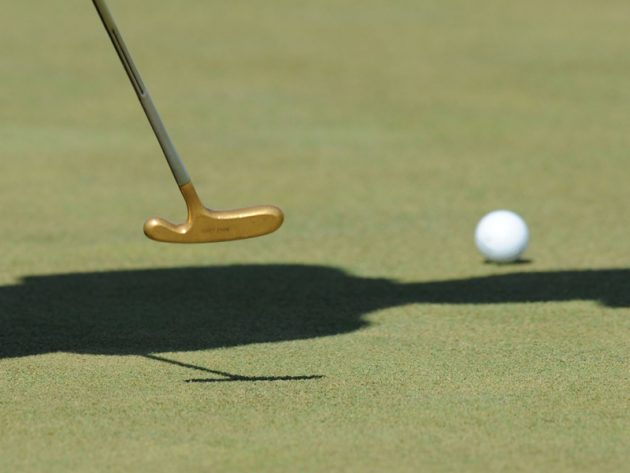
At number three, it’s the Bullseye putter – specifically the John Reuter Jr original. Ultimately, this ended up as the Titleist Bullseye, but it was master craftsman Reuter, a teaching professional from Arizona, who, in the 1940s, first invented the model.
“From what I understand, it was the first putter to have a shaft enter not in the heel,” says Joe. “It was more about evenly distributing the weight of the head on either side of the shaft a little bit.”
Titleist acquired the Bullseye in 1952, and started to make its own. However, if you do find one at a garage sale – perhaps you have one sitting around as an old spare at home – it could fetch you a few hundred dollars on the second-hand market, for some of these putters have become quite collectable.
The original Reuter Bullseye came in a number of different versions, not unlike today’s best putters, although even some of the latest putter ranges probably don’t have quite as many options as the Bullseye did.
To name but a few, there was the STD (Standard), OS (Old Standard), O Set (Offset) and LAF (La Femme).

Bob Charles used a Bullseye putter to win the 1963 Open Championship
(Image credit: Getty Images)
Then you have five or six different lengths, plus M, U and F options (medium, upright, flat), as well as P, S and C grips (paddle, standard and cord).
“A bit silly,” Joe says of all the model names, although this was a seriously good putter, one that did the business for a lot of the best players in the game.
“I’m putting this in because of its groundbreaking design,” says Joe. “It was one of the first of its kind to go away from that heel entry shaft point – and it was really effective.”
Arnold Palmer was a big proponent of the Bullseye, as was Bob Charles, the first left-handed player to ever win a Major Championship (1963 Open Championship), and he was widely regarded as one of the best putters of all time.
It was the old Bullseye-style putters that became popular at crazy golf (putt putt) outlets, maybe because there wasn’t any need to order a load of left- and right-handed models in, for they had the same front and back designs with no cavities.
Simply iconic.
Odyssey 2-Ball

(Image credit: Future)
Nomination number two came out in the late 1990s. Odyssey had already attracted worldwide attention when Nick Faldo used the brand’s Rossie II to famously hunt down Greg Norman at the 1996 Masters.
Then came the Odyssey 2-Ball. Joe remembers its arrival vividly.
“I remember seeing it in my pro shop and thinking, ‘What on earth?’” It’s not how it is now, where you see a product six months in advance on a YouTube video, or a new product in the hands of an influencer, a teaser on Instagram.
“This thing just turned up in the shop, and you were like, ‘What the heck?’” adds Joe. “It would blow your mind.”
Taking a moment to calm himself down, a misty-eyed Joe explains why this particular model makes it into his top-three putters of all time.
“This one was a total game-changer for a certain player struggling with alignment, who didn’t get on with a flange line, a top line, a sight line.
“All of a sudden you put two ball-size discs on the back and… well, I’m telling people what they know. That was baffling to people at the time.”
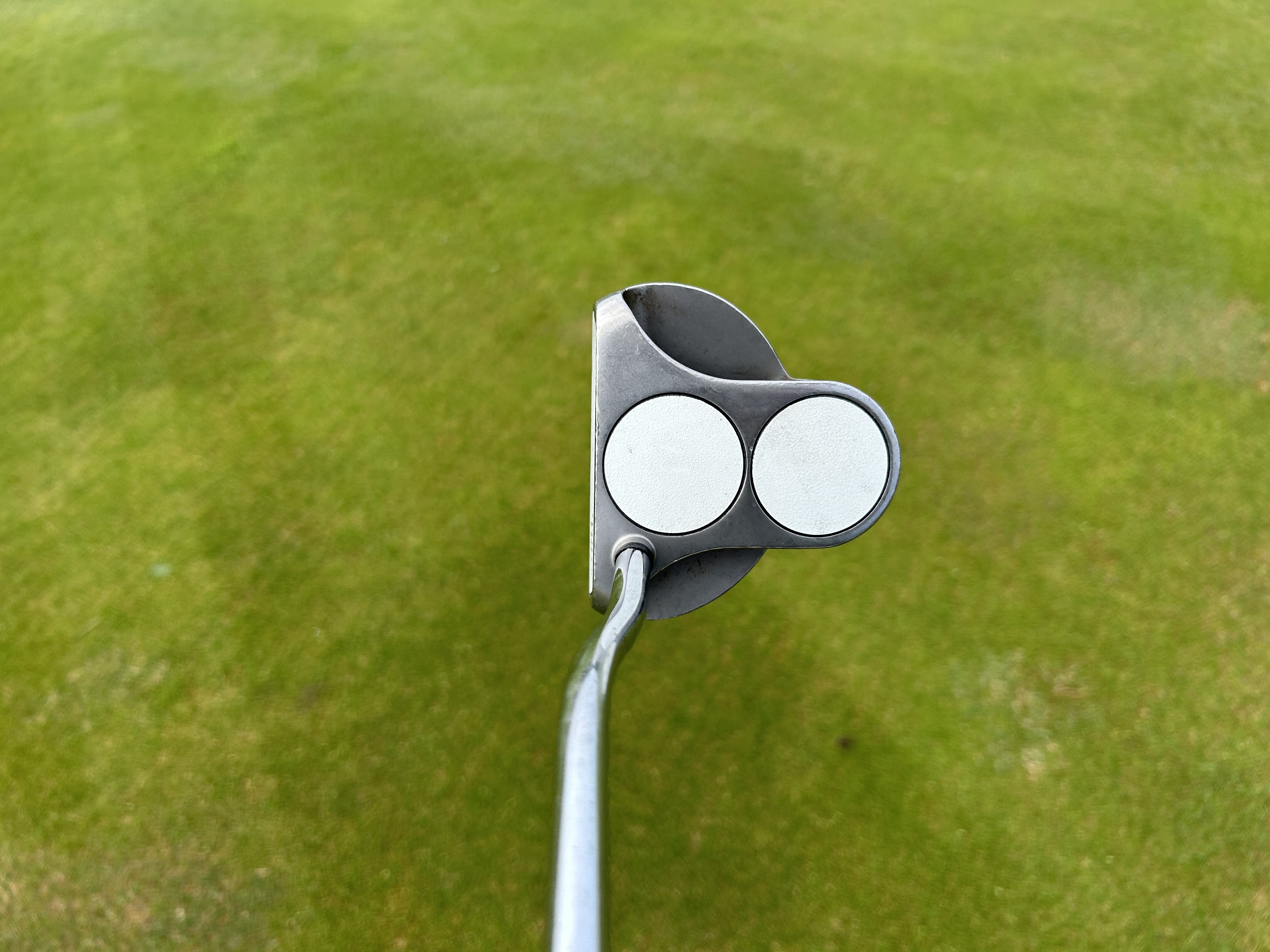
(Image credit: Future)
Baffling it may have been, but it caught on. Before long, golfers were drawing their own alignment lines on the disks with a Sharpie pen!
Odyssey soon got fed up with seeing its putters covered in smudged black lines. Joe remembers plenty of golfers making a pretty comical job of this. Along came the Odyssey Tour Line.
It’s the original Odyssey 2-Ball, however, that makes this list. More from Joe waxing lyrical about this old favorite.
“It was incredible for people who couldn’t line the putter up, and you still see so many of them today, even on tour. There have been many different iterations.
“The original White Hot insert has never been beaten, for me. It was the best. It had a little cavity under the disks because, presumably, there was too much weight to make that solid.”
A putter that had been dismissed as a fad, nothing but a gimmick, soon made its mark on tour.
“Within two or three years, Odyssey was by far and away the number one putter brand in golf,” adds Joe.
Ping Anser

The Ping Anser may be one of the most copied designs in golf club history.
(Image credit: Future)
This will probably come as no surprise. Joe’s third nomination is the Ping Anser.
“Had to be,” says Joe. “The Godfather of modern design, the first putter really to feature any kind of perimeter weighting.”
According to Ping, this putter style has been responsible for over 500 PGA Tour wins and 19 Majors Championships.
“It’s got to be the most copied putter/golf clubs in the history of the game,” adds Joe.
“What more can you say? Every brand, whether it’s Scotty Cameron, whether it’s Odyssey, whether it’s TaylorMade, every brand will have made its own version.
“It’s incredible that from the 1960s, we’re still using the basic identical shape to this day.”
But does this mean, with the blade putter dying out on tour, that after 60-odd years the much-loved Ping Anser could also be on its way out?
Joe thinks not.
Honorable Mentions

(Image credit: Future)
Two models Joe was keen to talk about, putters that didn’t make his final three, must receive a mention.
First up, the Wilson 8802 putter.
“There was a guy called Rhys Davies, who was a European Tour pro, who had a Yonex version, it had a graphite shaft, he was a really good putter, but statistically he wasn’t quite as good as everyone else.
“He was reasonable, but everyone thought he was brilliant because he had this beautiful, flowing little blade putter that you think of Ben Crenshaw with.”
As much as Joe likes this model, in a recent test, he struggled to square the clubface well enough from close range, although he did enjoy the feel from long range.
“The reason I just edged it out is because I don’t think it was quite the Ben Crenshaw putter, and the research I did was a bit inconclusive.
“I think he had a MacGregor version of what Wilson created as an 8802, and I think he won the Masters in 1995 with a Cleveland version of it.
“He was always in that shape rather than that actual putter, so I couldn’t quite square that off in my head.”

The Zebra putter was brought back in 2023.
(Image credit: Future)
The second honorable mention goes to the Ram Zebra putter, which, Joe says, was the “birth of the modern mallet.”
With its high MOI and really strong black and white alignment aids (hence the name, keep up), the Zebra was very bold, and certainly not commonplace at the time.
Raymond Floyd and Nick Price both won Majors with it, which was quite the endorsement and probably one of the reasons why you still see a few Zebras knocking about.
“There was a phrase that we always used at the scratch matches,” says Joe. “Beware the man with the Ram Zebra putter, because he will have no more than 18 putts.”
Have we missed off one of the best-ever putters? What about your favorites? Let us know using the comments box below…

